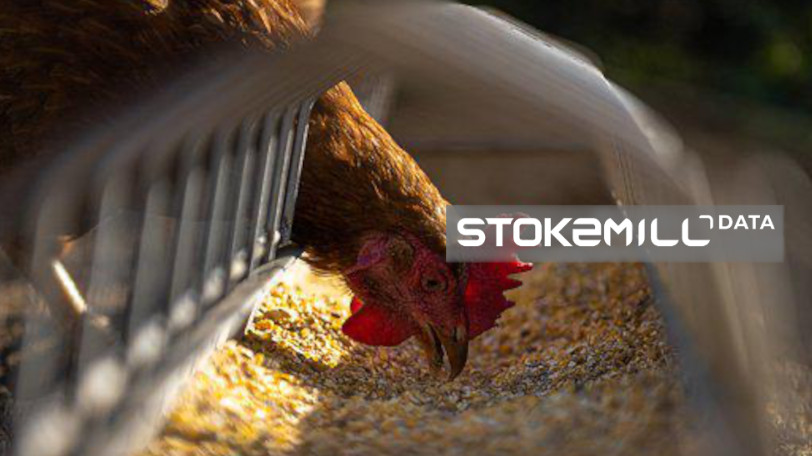Animal and fish feed
Animal and fish feed
According to the International Feed Industry Federation (IFIF) today world compound feed production is estimated to be just over one billion tonnes annually. Global commercial feed manufacturing generates an estimated annual turnover of over USD 400 billion. The United Nations Food and Agriculture Organization (FAO) estimates that by 2050 the demand for food will grow by 60% and that between 2010 and 2050 production of animal proteins is expected to grow by around 1.7% per year, with meat production projected to rise by nearly 70%, aquaculture by 90% and dairy by 55%. This already marks a growth factor of almost two. According to the FAO Global Food Outlook 2021, world bovine protein production has grown by 1.2% from 2020 to 72 million tonnes, poultry has risen by 1.3% to 135 million tonnes, pigmeat has grown by 4.2% to 114 million tons, farmed fish & seafood has risen by 1.1% to 85 million tonnes and dairy production has grown by 1.6% to 921 million tonnes. These annual growth ratios are indeed indicative of where global consumption of animal protein is heading to. According to the European Compound Feed Manufacturers’ Federation (FEFAC), the EU27 and UK compound feed industry employs over 100,000 persons working on an estimated four thousand production sites mostly located in rural areas. According to FEFAC farm animals in the EU27 and UK consumed an estimated 825 million tonnes of feed in 2020, of which about a little less than one fifth was produced by compound feed manufacturers. The turnover of the EU27 and UK compound feed industry was estimated at EUR 55 billion in 2020 with corresponding production at 150 million tonnes. In spite of the Covid-19 pandemic and its heavy impact on out of home consumption, production increased year on year. EU-27 share of global compound feed production stood at 13% of the total in 2019, which was estimated at 1.1 billion tonnes, but declined by 2% against 2018 as Asia’s share of the total increased faster. Feed formulators produce an end-product that must meet specific nutritional requirements of various species at various stages of animal production. Many raw materials such as cereals, pulses, rapeseed meal, fibres, or bioethanol’s by-product Dried Distillers’ Grains (DDGS) are mostly sourced in Europe, with the notable exception of vegetable proteins such as soy meal which are imported from the Americas but in a declining fashion. Animal feed and fish feed have started to benefit from recent additions to its raw materials from advances in insect farms and recent changes in the regulatory environment. Insect farms make use of larvae fed controlled diets that are harvested and processed for their protein and fat content. The resulting product is then sold to compound feed processors and fish feed processors. However, manufacturing volumes remain almost insignificant, in particular in the EU as Sanco, the heath authority has dragged its feet for many years due to lingering but justified sanitary concerns following the BSE crisis, and directives implemented at the time of the BSE crisis have had to be modified to allow for insect farming and processing. Fishmeal is an important and very digestible fish protein and ingredient in feeds and is used for the production of feed for aquaculture.
Fishmeal on average contains 60-72% fish protein, 10-20% ash and 5-12% fish oil, which is high in the health promoting omega-3 very long-chain polyunsaturated fatty acids EPA and DHA, often referred to as ‘omega-3s’. The remainder is minerals and water. Fish oil is 100% marine oil and has a high content of very essential omega 3 fatty acids. Fish oil is mainly used for the production of feed for farmed fish and in the production of refined fish oil for human consumption.
Keywords
Keywords: European Compound Feed Manufacturers’ Federation, FEFAC, compound feed, compound feed manufacturers, feed formulators, fish feed processors, fish feed, fishmeal, fish oil, fish protein, omega 3 fatty acids, EPA, DHA, polyunsaturated fatty acids, farmed fish, aquaculture, farm animals, animal production, EU-27, UK, Dried Distillers’ Grains, by-products, vegetable proteins, rapeseed meal, cereals, pulses, soy meal, fibres, insect farms, larvae, protein, fat, Sanco, directives, regulatory environment, sanitary, pigmeat, beef, poultry, ingredients, raw materials, refined fish oil, BSE crisis, out of home consumption, specific nutritional requirements, health authority, bioethanol


